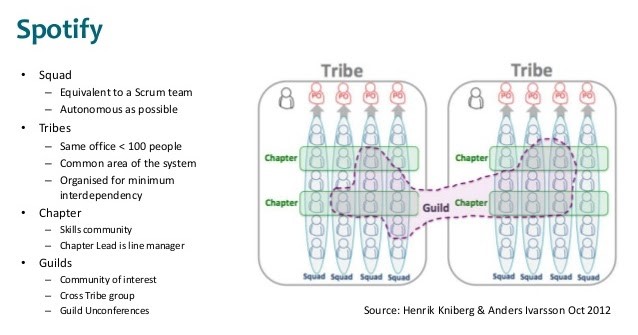In the second blog of this two-part series, we explore the need for a cross-functional people team whose sole purpose is to ensure every product team is resourced with the right people, at the right time but most importantly, provides everyone in that product team with choice and supported autonomy over their own destiny.
The People Team Charter
This new people team may include the following characteristics:
- Has complete visibility on product team demands; current and future (GTM, RM and PMO are all inputs here). Technology can significantly help reduce the friction in gathering this data and predicting shortfalls.
- Has complete visibility of the people in their teams – their career goals, their current placements and future utilization.
- Facilitates the right match between product team and individual contributor, emphasizing choice, autonomy and career growth.
- Helps find partners or assists in the hiring process to fill gaps.
 Don’t be fooled into thinking this team is just RM re-badged. This team is comprised of experienced unicorns; technical people who have walked-the-walk and earned the respect of their colleagues. When an individual on the People Team suggests a new role, the prospective product team member trusts and respects them enough to seriously consider it. Every move is collaborative. RM and PMO functions still exist, but they become the input metrics to this new People Team, keeping them up-to-date and advising what’s coming, but they do not decide who goes where and what they do.
Don’t be fooled into thinking this team is just RM re-badged. This team is comprised of experienced unicorns; technical people who have walked-the-walk and earned the respect of their colleagues. When an individual on the People Team suggests a new role, the prospective product team member trusts and respects them enough to seriously consider it. Every move is collaborative. RM and PMO functions still exist, but they become the input metrics to this new People Team, keeping them up-to-date and advising what’s coming, but they do not decide who goes where and what they do.
The Right Stuff
The good news is that most enterprises already have these experienced unicorns. Think of the best line manager you ever worked for and he/she would be in this team. Think of the best agile/scrum/transformation coach you ever worked with or the best PM, the best community lead or the best technical lead. The common factors here are the autonomy they made you feel, the mentorship they provided, the oversight of the many moving parts that they managed, the respect they had for you and your skills, and the respect that you had for them and their decisions.
So, the answer to the common question “what role do technical managers and senior leaders play in this new product team world?” is now easy – the really good ones fit in here.
We at Dell Technologies are lucky enough to have quite a few unicorns amongst us, thanks to our hiring practices and culture code and so moving to this model has been a faster journey than perhaps other organisations have experienced. We are continuously improving our working practices and leveraging the technology that we own to help accelerate this journey.
Below are some of the supporting services and technologies we believe can help you accelerate your journey to this Product Team model:
- Automation, visualisation and AI/ML technologies to provide a view of what teams are currently working on and where you may need to restructure. If product teams are already using tools like JIRA to manage their backlog and roadmap planning, most of the data is there, it simply needs to be fine-tuned, harvested, analysed, modelled and visualised.
- A marketplace of opportunities to provide team members with choice and opportunity for the future and context for conversations with the People Team.
- Visible development goals to ensure people’s career development is always considered during moves between Product Teams.
- A metrics framework that measures the right outcomes to ensure concentration on the correct input and output metrics e.g. NPS etc.
 Do not be tempted to try and automate everything. There is no technology available today that can replicate the human element you need in place to help people find the right roles, at the right time. Skills matrices can never be granular enough or sufficiently kept up-to-date to fill the gap of a conversation.
Do not be tempted to try and automate everything. There is no technology available today that can replicate the human element you need in place to help people find the right roles, at the right time. Skills matrices can never be granular enough or sufficiently kept up-to-date to fill the gap of a conversation.
The other advantage to having more fluid Product Team structures is that scarce and specialist knowledge can be communally shared. Not every person wants to be a jack of all trades. Some individuals want to double down in an area and hone their skills. This fluidity gives these specialists the ability to float between Product Teams, with the help of the People Team guiding them.
Factor in an Organizational Shift
Like anything in an enterprise, this model needs to scale. Once you get to a point where the People Team no longer personally knows each of their individual skills/needs/wants, you’ve got too big and you’ll need to start drawing boundaries around groups of people. As soon as you start grouping like this, you are risking silos but the benefits of close personal relationships here is the trade-off.
The choice of what boundaries you start drawing up can be an interesting one. We at Dell Technologies consulting have experimented with several different groupings with some interesting learnings from each choice.
There is a lot to be said for drawing boundaries by communities e.g. all people aligned to a particular skillset. The downside is that cross-pollination of skills may stagnate as your focus narrows.
Another choice is by geographical location. Again, a lot to be said for this as colocation really helps build relationships but the downside could be that geographical silos start appearing.
The Spotify model is an interesting grouping, but the picture alone doesn’t really answer the exam question – how do we collaboratively decide who is in which product (squad) team, how long they stay there and where do they move next?

One answer is to choose a higher-level grouping of either Tribes or Chapters and assign their leaders with an extra responsibility – the People Team Charter. The Spotify model does assign “line management” to Chapter leads so we can see perhaps which way Spotify have decided to scale this approach.
Whichever choice you make, the basic steps to get started are simple and common to all transformation programs:
- Start small with one location/one community/2 or 3 product teams.
- Identify your hypothesis and metrics and keep testing your approach.
- Automate away unnecessary toil as your model scales.
- Never forget the most important factor of a successful transformation is your people.
Summary
If you are considering implementing the Product Team model in an enterprise, you will also need to factor in an extra organizational shift. Functions like RM, PMO, Line Management, etc., need to receive the same silo-breaking treatment as our Dev and Ops teams and a new People Team needs to emerge. This team must be made up of those rare breeds that can balance technology, people and leadership skills. Their skill will dictate how well your Product Teams perform and how well you can attract and retain talent. Do not short-change it. Support it with automation and technology like AI/ML and fill it with unicorns.
And, remember, you don’t have to venture this journey alone. Dell Technologies Consulting is here to help you, if needed.
Please see the first blog in this series, Bringing the Start-up Risk/Reward Culture to Life in Enterprise Product Teams for more information.


